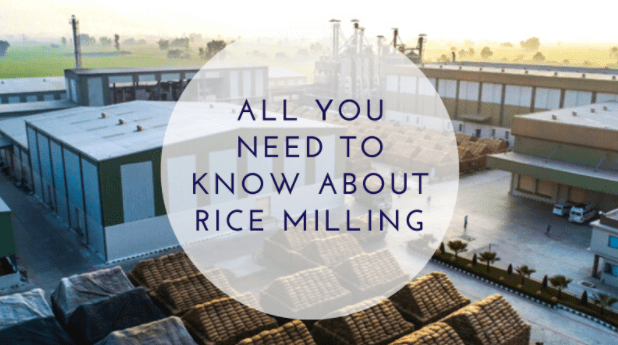Rice is eaten all around the globe and complements many cuisines. It is one of the tastiest and healthiest grains and devoured by rich as well as poor people. Apart from its mouthwatering taste, rice has many health benefits.?
The farmers invest almost 4 months to produce the paddy and then it goes through various processing steps before being placed in the supermarket. Before going to the grocery stores rice grains are sent to the rice mill, where their outer parts husk, and bran is removed. In the case of white rice three outer layers i.e. bran, husk, and sperm are separated from the endosperm and its shelf life is much more than the brown rice. There are myriad types of rice and milling of every rice is done differently. Generally, the best Basmati rice millers milled the rice at 13% moisture content. The excess moisture content can lower the head rice and can result in grain discoloration. Rice milling is not a single-step process, different stages are involved to obtain the final product from raw paddy.
Types Of Rice Mills
Typically, there are two methods of rice milling: traditional and mechanical. Let us discuss them in detail.
Modern Milling Procedure
Several operations combine a milling process in large commercial mills which yield higher quantity and best quality white rice from rough rice or paddy. Raw paddy undergoes the following procedures to yield white rice.
- Pre-cleaning – Raw paddy that enters the mill comprises different particles like straw, soil, weed seeds, and other inert materials. These particles need to be removed before hulling as they might reduce the efficiency of the huller and the milling recovery. The capacity of the paddy pre-cleaner is usually 1.5 times larger than the milling capacity.
- Dehusking or Dehulling (Removing the husk) – Husk forms about 20% of the paddy weight. We obtain Brown rice by removing the husk from raw paddy. The paddy grains pass through two abrasive surfaces that are moving at a different speed. This produces friction among the paddy grains and the husk is removed. Once the husk is removed they are transported to a storage dump outside the mill by suction. An efficient husker can remove 90% of the husk at a time.
- Paddy separation – An efficient paddy separator works depending on the difference in buoyancy, size, and a specific gravity between the brown rice and paddy. In this process, unhusked paddy is separated from brown rice. A proper husker should not produce more than 10% of paddy.
- Polishing or Whitening – We obtain white rice by removing the germ and the bran layer from the paddy. Fiction or abrasive publishers are used to remove the bran layer from the kernel. Usually, 8 to 10% of the total paddy weight is removed as bran. Passing the rice through a series of two to four whitening machines will prevent the grains from breaking.
- Separation of white rice – An oscillating screen sifter separates the white rice into brewers, small and large broken rice, and head rice after polishing. Head rice that is 75 to 80% or more of whole kernels is classified as kernels. An indent or length grader is used for grading to attain a higher degree of precision.
- Rice mixing – We can obtain 10 to 15% of small broken kernels, 5 to 10% of large broken kernels, and 50 to 60% of whole kernels (head rice). Usually, the number of broken kernels present in the rice grades can differ from 5 to 25% depending on the country’s standards. A volumetric mixer is used to effectively mix the rice.
- Mist polishing – To improve the lustre of the rice (polish) without significantly reducing the milling yield a fine mist of water is mixed with the dust retained on the whitened rice. Finally, a friction type whitening machine is used to polish the rice before selling. During the final whitening process, a fine mist of water is delivered to yield high-quality rice.
- Rice weighing – Accurately weighing and labeling the rice is the most important process in milling. Rice is usually sold in 50 kg sacks. Manual mechanical and electronic weighing systems are available to weigh rice. The most effective and accurate method is a fast electronic system. But most of the rice mills still use manual mechanical weighing systems till now.
An efficient rice mill contains high efficient and advanced machines to produce high-quality and best basmati rice yields.

As the editor of the blog, She curate insightful content that sparks curiosity and fosters learning. With a passion for storytelling and a keen eye for detail, she strive to bring diverse perspectives and engaging narratives to readers, ensuring every piece informs, inspires, and enriches.










